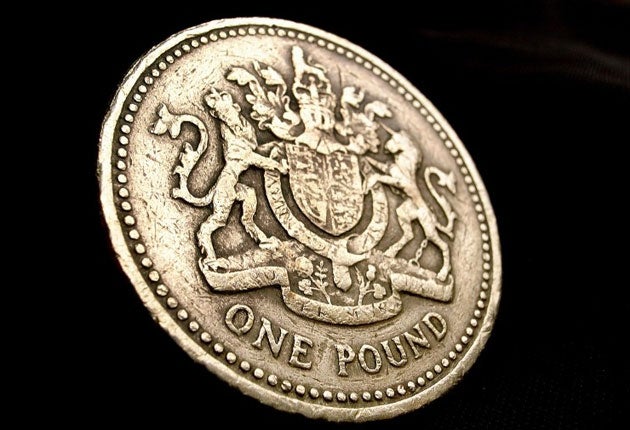Royal Mint: 'Thirty million £1 coins are fake'
Royal Mint finds that the number of counterfeit coins has doubled in five years

The number of fake £1 coins has doubled in five years to 30 million – about one in 50 – because of counterfeiting by organised crime gangs.
Random sampling tests by the Royal Mint revealed that approximately 2 per cent of £1 coins are bogus, up from 1 per cent in 2003 and the highest level of forgeries in the denomination's 25-year existence. Only careful examination reveals the true origins of the coins, which are spent freely (and illegally) in shops, pubs and restaurants.
Police have caught several forgers in recent years, but a former Royal Mint executive, Robert Matthews, believes the architects of the fraud are at large.
"There is organised crime involved," said Mr Matthews, who retired as the Queen's Assay Master (tester of coinage and bullion) four years ago. "The police have done well to catch these mints but they have only caught the people operating the machinery. Who is behind this is another matter."
Italy and eastern Europe are believed to be two sources of blank coins, or dies, which are "headed and tailed" by lower-level counterfeiters in the UK, Mr Matthews said.
The counterfeiters mimic the nickel-brass compound used by the Royal Mint, but sometimes add lead so that levels of electro-conductivity are accepted by vending machines. The coins are thought to cost around 20p each to make and sold on for about 70p, netting the counterfeiters up to £2m a year.
In a rare police success, an engineer, Marcus Glindon, was jailed for five years in December 2007 after detectives discovered coin-making machinery in his workshop at an industrial estate in Enfield, north London.
Despite making up to £300,000, Glindon showed little sign of wealth, and his accomplices, whom he named as "Tom" and "John", were not caught.
Glindon, 37, claimed that he was "relieved" he had been caught. At the time of his conviction at Wood Green Crown Court in December 2007, Dan Roberts, of the Metropolitan Police's major crimes unit, said detectives had uncovered a "nationwide criminal network" and put a substantial dent into the illegal production of the coins.
The Royal Mint and police are under pressure to act following the example of South Africa's five-rand coin. In 2004, South Africans started refusing to accept it because of the number of counterfeits. Eventually the coin had to be redesigned and recirculated.
The Royal Mint appears sanguine about the level of counterfeiting. It said: "We track the counterfeit rate through regular surveys. The survey consists of taking a random sample of coins from across the country and subjecting them to individual analytical inspection.
"It is a criminal offence to make or use counterfeited coins. Anyone who suspects they have a counterfeited coin should not attempt to spend it."
Under the 1981 Forgery and Counterfeiting Act, forging coins carries a prison sentence of up to 10 years.
How to spot one... and the ethics of using one
* Check the edge: on fake coins the lettering will often be indistinct, or the wrong typeface.
* Hold the coin so the Queen's head is upright and facing you. The pattern on the reverse should also be upright.
* Most fake coins will not work in vending machines.
* "If you print out £5 notes then that is clearly wrong... But if you notice that among your change is a dodgy £1 coin, and you reject that coin, then you are doing yourself some harm. If you pass that coin on, you're just saying: 'I refuse to let myself be worse off.'"
Dr Martin Cohen, 101 Ethical Dilemmas
Subscribe to Independent Premium to bookmark this article
Want to bookmark your favourite articles and stories to read or reference later? Start your Independent Premium subscription today.
